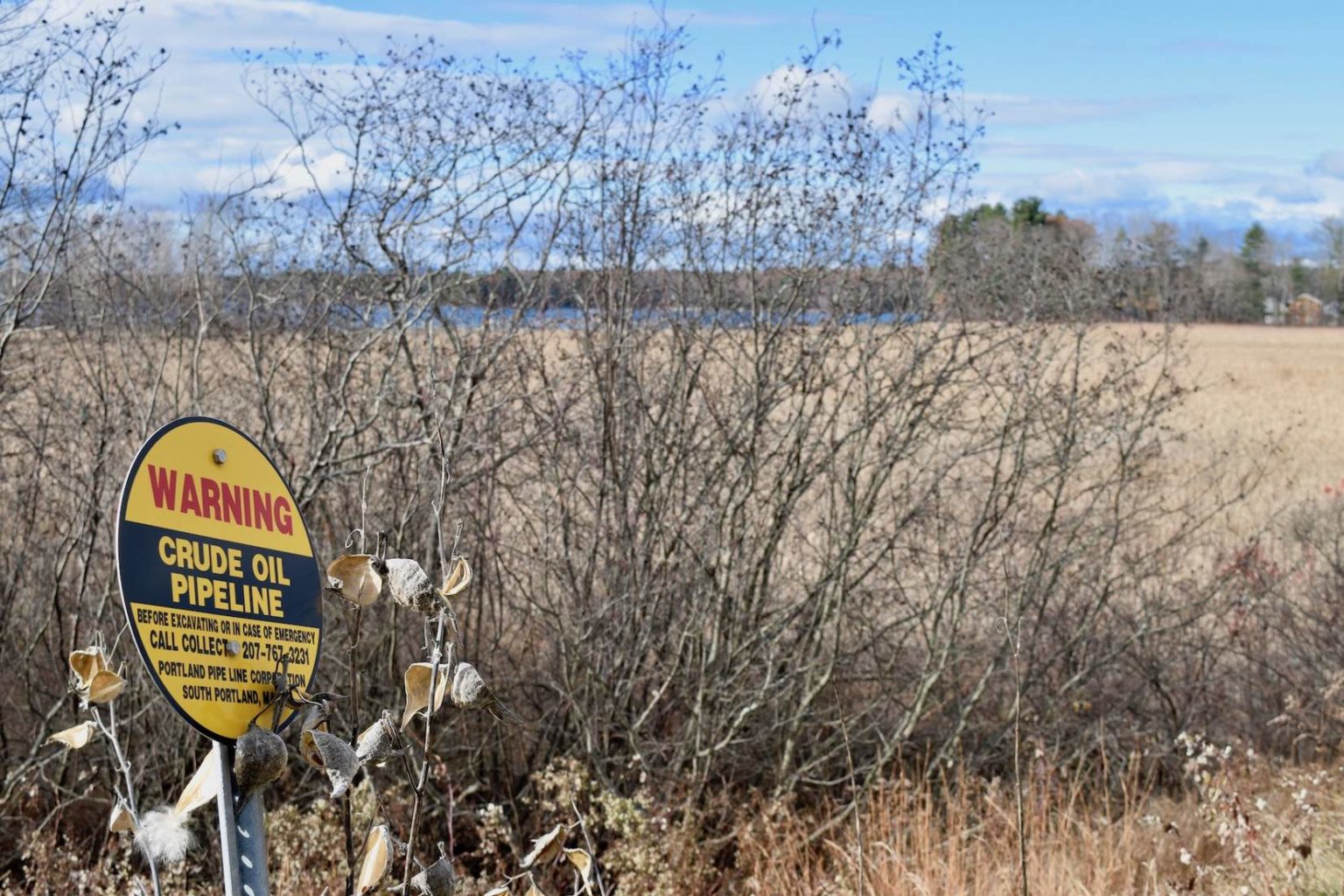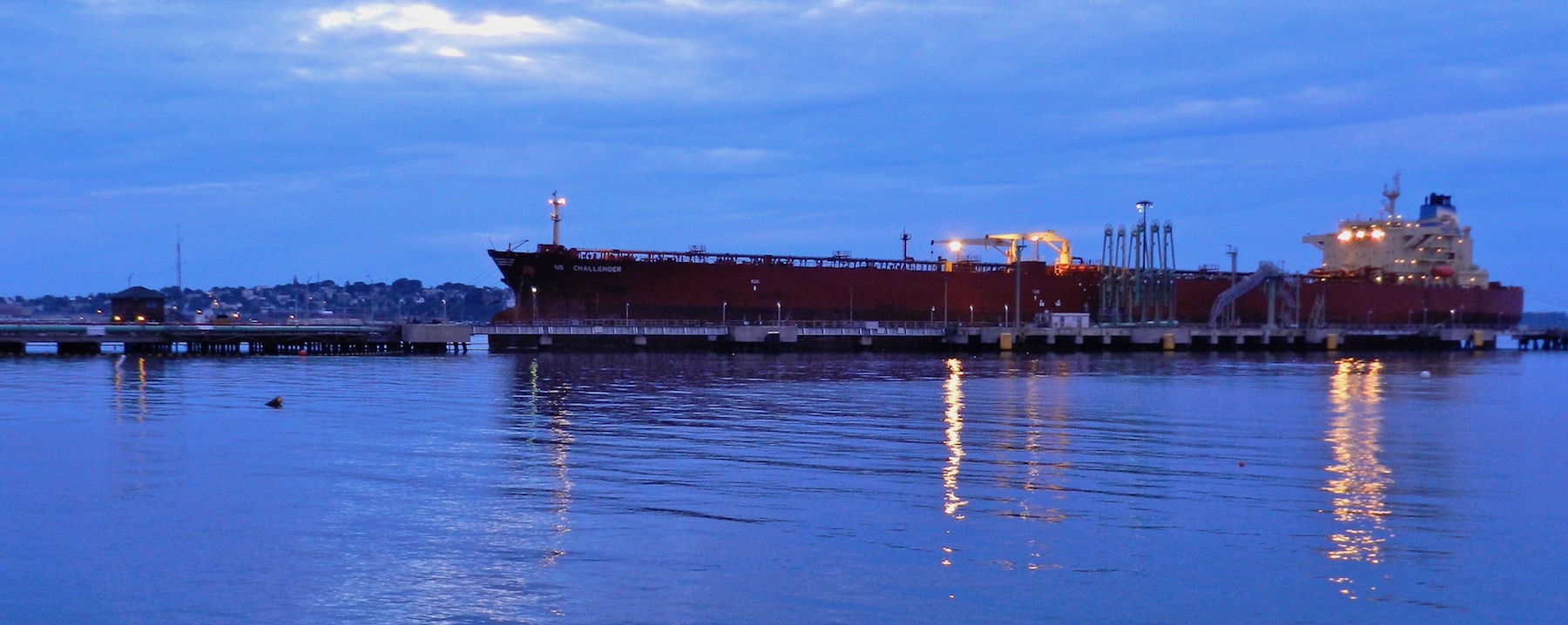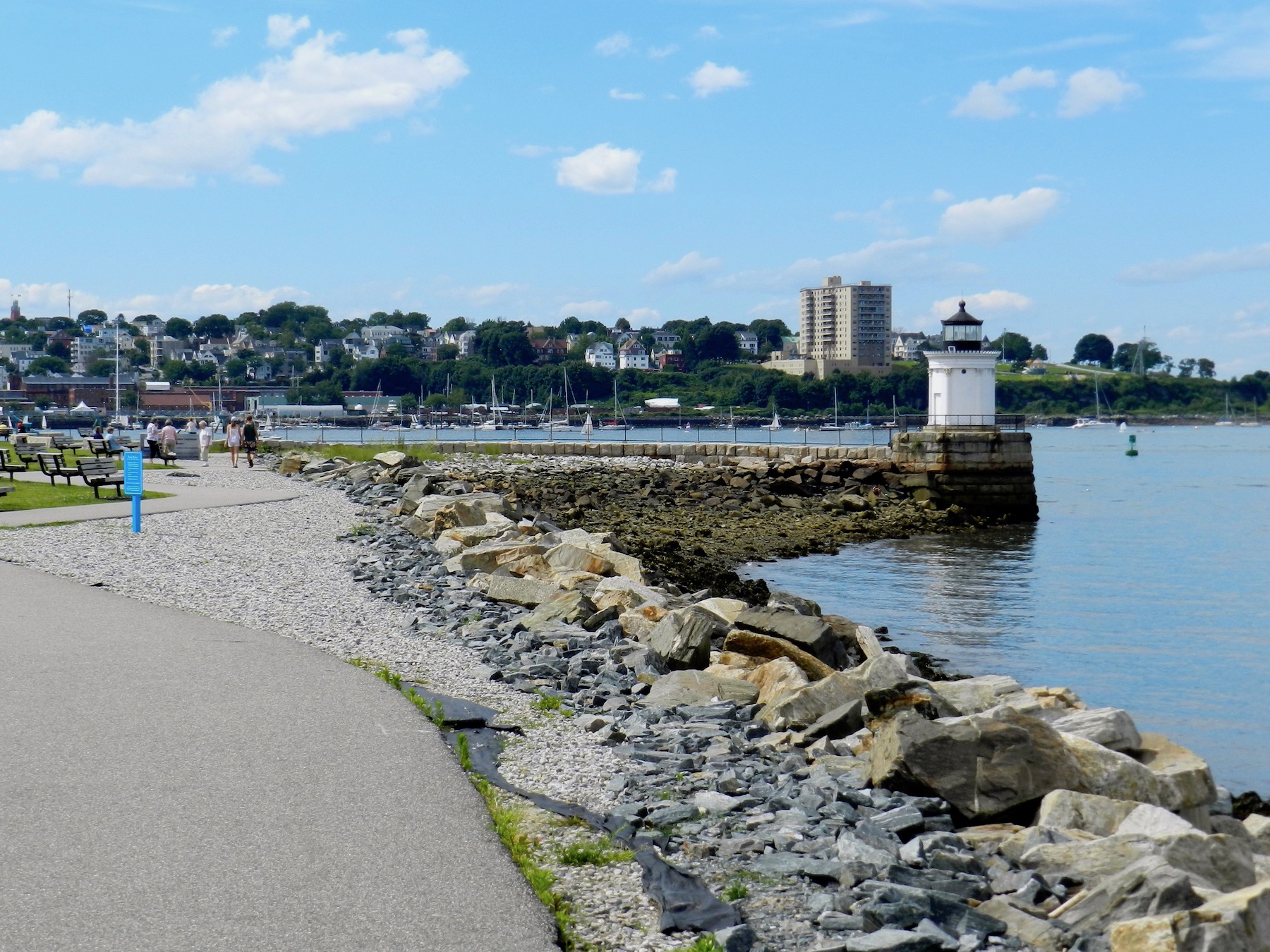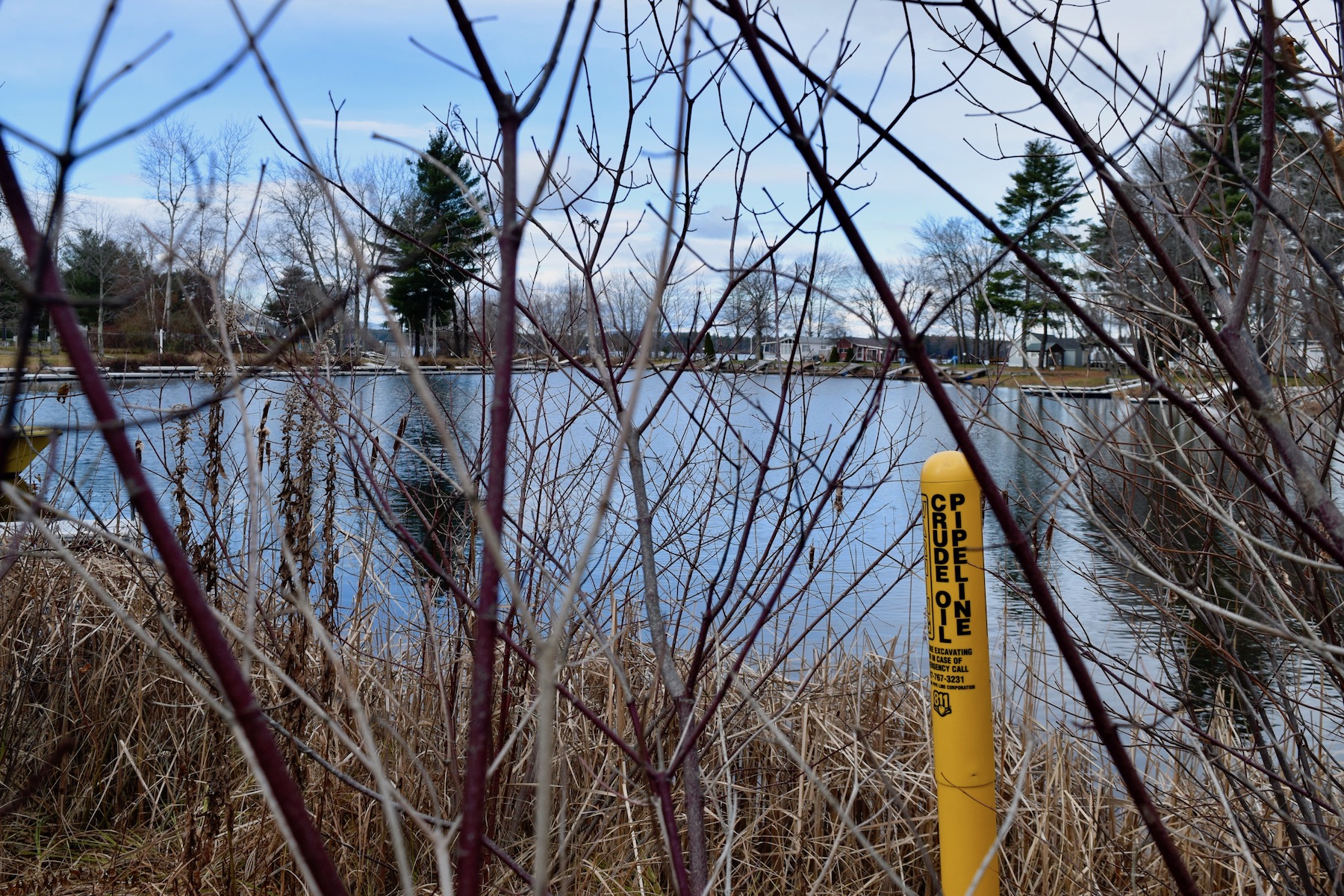In a case that has national ramifications, a federal judge has ruled against the city of South Portland, Maine, in its latest effort to stop the coastal town from becoming a destination for Canadian tar sands oil. The case centers around an existing pipeline owned by oil companies ExxonMobil, Shell, and Suncor.
The Portland Montreal Pipeline currently moves refined oil from South Portland to Montreal, Canada. However, since Canada is awash in oil and currently exports over three million barrels a day to the U.S., there is very little demand there for U.S. oil. As a result, the pipeline is not operating close to full capacity.
The oil companies that own the Portland Pipe Line Corporation (PPLC) now want to reverse the pipeline’s direction to bring Canadian tar sands oil to South Portland, where it would be exported.
In 2014, the city of South Portland passed the Clear Skies Ordinance, banning the export of crude oil from the city. This ordinance was designed to protect local air quality because the plans to bring tar sands oil to South Portland require building two smokestacks on the waterfront, located adjacent to residential areas. These pollution control towers would burn off the toxic volatile components of the tar sands oil mixture.
Proposed location of pollution control towers with the city of Portland in the background. Credit: Thomas Mikulka
In 2013, prior to the city passing the Clear Skies Ordinance, residents of South Portland gathered the 4,000 signatures required to place a measure on the ballot, which would allow voters to decide whether or not they wanted to allow tar sands oil in their community. That’s when the oil industry started paying attention. The American Petroleum Institute ended up spending over $750,000 to help defeat the ballot measure, which lost by fewer than 200 votes.
Why would oil companies and their lobbyists spend so much money on a small pipeline project that may never be economically viable? The reason has little to do with this particular project and everything to do with setting a precedent for preventing local communities from taking actions to protect their air quality or local environment when those issues come into conflict with oil and gas interests.
“This has always been seen by the companies as a beachhead,” Sean Mahoney of the Conservation Law Foundation told Inside Climate News. “They can’t allow communities to pass this kind of ordinance because it could be a model for communities everywhere.”
Sure enough, after the city council overwhelmingly passed the Clear Skies Ordinance in 2014, the Portland Pipe Line Corporation sued the city to overturn the crude oil export ban.
Bug Light Park is adjacent to the proposed location of the pollution control towers necessary for exporting Canadian tar sands oil from South Portland. Credit: Thomas Mikulka
Is This Tar Sands Pipeline Economically Viable?
In the latest round of this legal battle, the city of South Portland asked Judge John Woodcock Jr. to throw out the case because the pipeline in question isn’t economically viable and PPLC has no plans — or financing — in place to proceed with the project. The city’s lawyers pointed out that reversing the pipeline to bring tar sands oil from Canada to South Portland requires oil for the pipeline, yet it currently has no way to get that oil. Even the judge made this point in the recent decision, saying, “for PPLC to pump oil from Montreal to South Portland, there must be oil to pump.”
And right now there isn’t. The pipeline company originally argued that it would source oil from TransCanada’s proposed Energy East pipeline, but that project has now been cancelled. Enbridge Line 9, its other pipeline option, is currently at full capacity and an unlikely source of oil to ship to South Portland. In a recent presentation Enbridge said “its system is expected to be at or near capacity through 2021.”
At the moment, there is no way to supply the South Portland pipeline with oil to transport from Canada to Maine. On this basis, the city’s lawyers argued the pipeline company shouldn’t be allowed to continue with its lawsuit because even if it won, the pipeline would not be economically viable. No one will finance an oil pipeline that has no access to oil, they say.
When Energy East was still a possibility, it was a big part of PPLC’s argument about why the company needed to reverse the pipeline in the first place. Judge Woodcock’s recent decision notes this: “During the August 9, 2017 evidentiary hearing, PPLC relied heavily on the prospect of the construction of this new pipeline to alleviate the lack of volume currently available through Enbridge Line 9, most of which appears to be under contract.”
But with Energy East now out of the question, PPLC claims this is a good thing.
The judge’s decision notes that PPLC asserted that the Energy East pipeline’s cancellation was not only not important because of the “‘dynamic, extremely complex [nature of the oil] market, that is affected by a myriad of influences,” but was in fact a positive development because it would mean that the Portland Montreal Pipeline “will continue to be the sole operator of a crude oil pipeline running to the Atlantic coast.”
This complete reversal on the role of the Energy East pipeline didn’t seem to bother Judge Woodcock. And he has embraced the PPLC’s “extremely complex nature of the oil market” argument as justification for allowing the lawsuit to continue, because, basically, no one can predict the future of oil markets:
“… the Court does not need to resolve the complicated question of whether the City is correct [about little to no oil being available for the pipeline] … this is because whatever the state of the oil market today, it can be said with some confidence that it will not be the same four or so years from today.”
Except when it comes to Energy East and Enbridge Line 9, things are likely to be the same as they are today. Energy East won’t exist in four years and Enbridge Line 9 has said that its system will be at capacity until at least 2021.
But essentially the judge is saying that just because the pipeline is not economically viable today doesn’t mean it couldn’t be viable at some point in the unknowable future.
However, at the same time the judge said you can’t predict the future or try to resolve “complicated” economic questions, he took the liberty of doing just that when he wrote, “In the range of oil company projects, PPLC’s reversal of an existing pipeline seems a surer bet than many other proposals.” Seems like a bold conclusion from someone who has repeatedly said the future and oil markets are far too complex to predict.
Still, the judge did emphasize the one thing he was certain about.
“The one constant factor I know is they have a pipeline in the ground,” Judge Woodcock said at the November 21 hearing. And that seemed to be enough for him to let the case continue.
In the Ground and Under the Water
The fight in the courts may be about an air quality ordinance and the rights of a community to control projects with potential health impacts in that area, but the pipeline reversal project poses another threat to the people of South Portland and the greater Portland metro area.
The current pipeline passes under a section of Sebago Lake, which is the source of drinking water for Portland as well as 15 percent of Maine. If the pipeline leaked, the potential economic and health impact of polluting Sebago would be immense.
Existing pipeline passing below Sebago Lake in Maine. Credit: Thomas Mikulka
The Keystone pipeline’s recent oil leak occurred in an agricultural field in South Dakota and did not immediately contaminate any water sources. However, the 2010 leak of the Enbridge Line 6 pipeline resulted in tar sands oil going directly into Michigan’s Kalamazoo River. That spill took five years and more than a billion dollars to clean up.
While the judge is correct that “they have a pipeline in the ground,” it is clear that “they” — the Portland Pipe Line Corporation — are not the only ones assuming the risk in this situation. The air quality of South Portland and the drinking water for the greater Portland metro area are at risk. This lawsuit will determine if the residents of South Portland are allowed a say over those risks or if the oil industry will overrule residents.
Main image: Marsh adjacent to Sebago Lake. Credit: Thomas Mikulka
Subscribe to our newsletter
Stay up to date with DeSmog news and alerts










